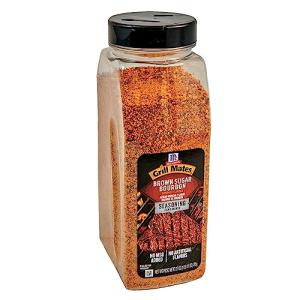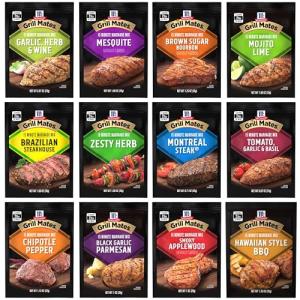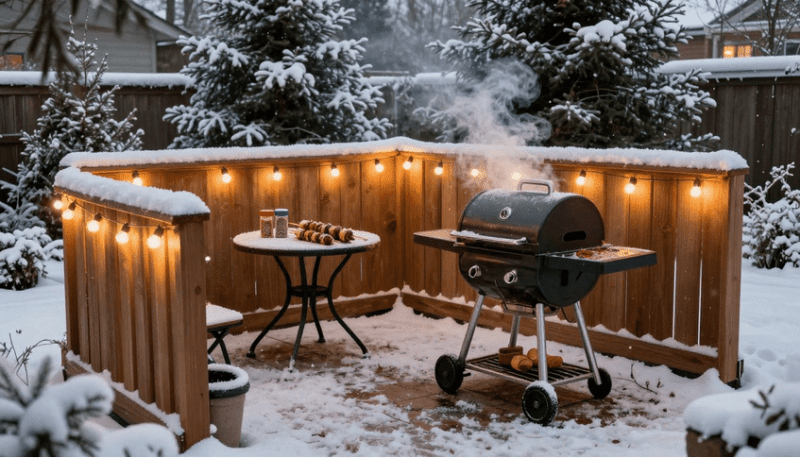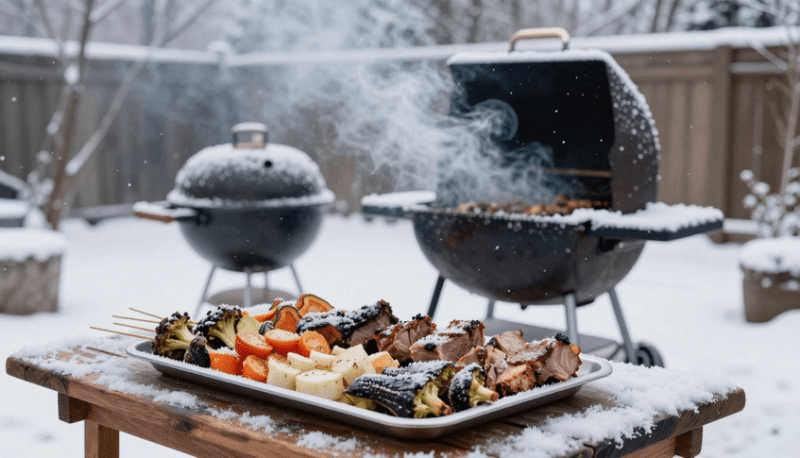Discover the tasty differences and find out which cooking method:
Chicken lovers can't stop arguing about whether grilling or smoking brings out the best flavor. Both sides have diehard fans who'll defend their favorite method to the end.
Smoked chicken usually wins the flavor battle for me, thanks to its deeper, more complex taste from hours in wood smoke. On the other hand, grilled chicken has a lighter, charred flavor and is ready way faster.

I’ve cooked chicken both ways more times than I can count. Grilling gets you that classic barbecue char in half an hour or less.
Smoking? That’s a commitment—several hours of waiting, but you end up with tender, smoky meat all the way through.
Your decision really comes down to time, taste, and what you want out of the meal. Let’s dig into the science, prep tips, and how each method fits different occasions.
I’ll also touch on health differences and try to clear up some common questions about grilling and smoking chicken.
Key Takeaways
- Smoked chicken stands out with deep flavor from low heat and wood smoke
- Grilled chicken is faster, with a charred outside and lighter taste
- Pick based on your available time, what flavors you like, and the vibe of your gathering
Comparing Grilled and Smoked Chicken
The biggest differences? Cooking time, temperature, and how the flavor develops. Grilling gives you charred edges and a smoky hint in minutes, while smoking takes hours to build up deep flavors and super tender meat.
Key Differences in Cooking Methods
I grill chicken over direct heat—usually somewhere between 350-450°F. Most cuts are done in 15-25 minutes.
Smoking is a different animal. I set my smoker to 225-275°F and let the chicken hang out for 2-4 hours.
Grilling process:
- Direct heat from gas or charcoal
- Quick searing for those grill marks
- Flip often to avoid burning
- Chicken hits 165°F in no time
Smoking process:
- Wood chips or chunks for smoke
- Low, steady heat for slow cooking
- Leave it alone—minimal handling
- Long cook time breaks down tough tissue
The heat source changes everything. Grilling blasts the meat from underneath with flames or coals. Smoking surrounds the chicken with gentle heat and swirling smoke.
Distinct Flavor Profiles
Grilled chicken gets that bold, charred flavor from direct heat. I love the caramelized outside and the hint of smoke when fat drips onto the coals.
The Maillard reaction works its magic on the surface, creating complex flavors at high temps.
Smoked chicken soaks up wood flavors over time. Different woods change the game:
- Hickory: Bold, bacon-y
- Apple: Mild, sweet
- Cherry: Fruity, gentle smoke
- Oak: Balanced, medium
The smoke gets deep into the meat during those long hours. I always look for that pink “smoke ring” just under the skin—it’s a sign you did it right.
With grilled chicken, the flavor’s all about the outside. Smoked chicken? Every bite is packed with smoky goodness.
Texture and Juiciness Comparison
Grilled chicken usually has a firm, slightly chewy bite and crispy skin. The high heat locks in juices if you don’t overcook it.
Thighs stay juicier than breasts when grilling, thanks to more fat. The skin crisps up and pulls away easily.
Smoked chicken? It’s tender and almost falls apart. The low heat gently breaks down fibers without drying it out.
Texture differences:
- Grilled: Firm bite, crispy outside
- Smoked: Tender, sometimes falling off the bone
Smoking keeps chicken moist all the way through. I almost never end up with dry smoked chicken—the gentle heat just works.
The skin on smoked chicken stays soft and a bit chewy. Some folks like to finish it on the grill for a quick crisp-up.
Flavor Science: What Sets Each Method Apart?

The science behind grilling and smoking leads to completely different flavors. Heat and smoke play their own roles, transforming chicken into two totally unique experiences.
How Grilling Impacts Taste
Grilling brings flavor through the Maillard reaction. That’s when chicken’s proteins and sugars react to high heat—usually 300-500°F.
This reaction creates hundreds of new compounds, giving grilled chicken its savory, meaty taste. It kicks in around 280°F but really shines above 300°F.
Direct heat also creates those char marks. They taste a bit bitter and smoky, adding some complexity.
Grilling dries the chicken’s surface fast, which concentrates the natural flavors and gives a good crust. The inside stays juicy while the outside gets intense.
When fat drips onto the heat source, it vaporizes and floats back up, sticking extra flavor onto the chicken.
How Smoking Influences Aroma
Smoking uses lower temps—usually 225-250°F. This gentle heat lets smoke particles sink deep into the meat.
Wood smoke is complicated stuff, with over 100 chemical compounds. The main ones?
- Phenols: Smoky, sometimes medicinal
- Carbonyls: Sweet, a little like vanilla
- Organic acids: Tangy, sharp
Switch up your wood, and you change the flavor. Hickory is strong and bacon-y, apple is mild and sweet, and oak sits right in the middle.
The low smoking temperature lets all those compounds slowly soak into the chicken, not just hang out on the surface.
Smoke vs. Char: Depth of Flavor
Char from grilling gives you intense flavor on the outside, but it doesn’t go deep. Those high-heat reactions happen fast and mostly stay on the surface.
Smoke, though, can reach a quarter inch into the meat. That’s why smoked chicken tastes consistent all the way through.
With grilled chicken, you get a flavor punch on the outside and a milder inside. Smoked chicken has a steady, even taste throughout.
The smoke ring is the proof—pink just under the surface, packed with smoky flavor that lingers.
Preparation Techniques for Maximum Flavor

How you prep your chicken can make or break the final dish. Marinades, rubs, and the right fuel all matter more than you might think.
Marinades and Seasonings
I always marinate chicken for at least two hours if I have the time. The flavors get a chance to really work their way in.
For grilled chicken, I use acidic marinades—lemon juice or vinegar does wonders. I’ll mix in olive oil, garlic, herbs, and citrus for a basic blend.
For smoked chicken, I stick with dry rubs. Salt, paprika, brown sugar, and black pepper are my go-tos. I rub it on about 30 minutes before smoking.
Some of my favorite combos:
- Classic BBQ: Brown sugar, paprika, garlic, onion powder
- Mediterranean: Oregano, thyme, lemon zest, olive oil
- Cajun: Cayenne, paprika, garlic, thyme
I always pat the chicken dry before seasoning. It helps the flavors stick and gives a better crust.
Choosing the Right Wood and Charcoal
The fuel you use really changes the chicken’s taste. I like to switch it up depending on the method.
For grilling, I prefer lump charcoal. It burns hotter and cleaner than briquettes. Sometimes I toss on wood chips for extra smoke in the last 20 minutes.
For smoking, picking the right wood is everything:
| Wood Type | Flavor | Best For |
|---|---|---|
| Apple | Mild, sweet | Whole chickens |
| Cherry | Mild, fruity | Chicken breasts |
| Hickory | Strong, bacon-like | Thighs and legs |
| Oak | Medium, earthy | Any chicken cut |
I soak wood chips for about 30 minutes before using them. That way, they smoke instead of just burning up right away.
Mixing woods can be fun—apple and hickory together give a sweet-smoky balance that’s tough to beat.
Health and Nutrition Differences
Grilling and smoking both affect chicken’s nutrition and health profile. The cooking method changes things like calories, fat, and even some of the compounds that end up in your food.
Nutritional Impact of Grilling
Grilling chicken cuts down on fat since extra fat drips right off the meat. That means grilled chicken usually has fewer calories than chicken cooked other ways.
A 3.5-ounce grilled chicken breast clocks in at about 165 calories and 3.6 grams of fat. The high heat keeps most of the protein locked in.
Grilling helps chicken hold onto B vitamins, especially niacin and B6. On the flip side, some water-soluble vitamins like thiamine just don’t survive the heat.
Direct heat gives chicken that crispy outside while the inside stays juicy. I like that you don’t have to pour on extra oils or butter to get it done.
Nutritional Impact of Smoking
Smoked chicken keeps more moisture because low and slow cooking doesn’t dry it out. You end up with tender meat, but the calorie count can be a bit higher.
A 3.5-ounce smoked chicken breast has around 175 calories and 4.2 grams of fat. That longer cooking time breaks down tough fibers, so the protein goes down easier.
Smoking holds onto more water-soluble vitamins compared to grilling. The lower temps help protect nutrients as the chicken cooks.
Wood smoke even adds trace minerals like potassium and magnesium. Different wood types bring in small amounts of antioxidants from the smoke, too.
Potential Health Risks
Grilling at high heat creates compounds called heterocyclic amines (HCAs) and polycyclic aromatic hydrocarbons (PAHs). These show up when meat juices hit hot surfaces and turn into smoke.
Studies have linked these compounds to higher cancer risk if you eat them a lot. The blackened, charred bits have the most of these chemicals.
Smoking doesn’t make as many HCAs because it uses lower heat. But the smoke does have PAHs, and those can stick to the surface of the chicken.
I always trim visible fat before cooking and skip the charred bits. Marinating chicken for half an hour before cooking cuts down HCA formation—sometimes by as much as 96%.
Best Occasions for Grilled or Smoked Chicken
Grilled chicken is my go-to for quick weeknight meals or casual gatherings when you need food fast—think 30 minutes or less. Smoked chicken really shines at weekend get-togethers or special dinners when you can spare 2-4 hours for slow flavor building.
Backyard Barbecues
I almost always pick grilled chicken for backyard barbecues. People expect that classic charred flavor, and those grill marks just look so good.
Grilled chicken cooks up fast, so I can feed a crowd in under half an hour. That’s a lifesaver when you’ve got hungry guests milling around.
Best grilled chicken cuts for barbecues:
- Chicken thighs (they stay juicy)
- Drumsticks (easy to grab and eat)
- Chicken wings (super quick)
The smoky flavor from grilling pairs up nicely with classic barbecue sides like corn and potato salad. I can also tweak the heat if someone wants their chicken more or less charred.
Family Dinners
Smoked chicken is perfect for Sunday dinners when I’ve got time to let it cook slow. The meat gets so tender, even kids and grandparents have no trouble eating it.
Usually, I smoke a whole chicken for family meals. It feeds everyone, and there’s always leftovers for sandwiches or salads the next day.
Why smoked chicken wins for family dinners:
- Cooks itself while I handle the side dishes
- Makes a centerpiece for the table
- The mild smoky flavor pleases everyone
- Leftovers are great for lunch
With a 3-4 hour cook time, I actually get to hang out with family instead of sweating over the grill.
Frequently Asked Questions
Grilled chicken gets a charred exterior and bold, smoky notes from direct heat. Smoked chicken, on the other hand, takes on deeper, wood-infused flavors from slow, indirect cooking.
What are the distinct flavor profiles of grilled chicken versus smoked chicken?
Grilled chicken ends up with crispy, caramelized skin and a little char. High heat brings out bold, savory flavors through Maillard reactions.
For me, grilled chicken usually has a sharper, more direct flavor. Flames and hot grates leave those signature grill marks and smoky hints.
Smoked chicken comes out with a more layered flavor. The wood smoke slowly works its way into the meat.
I notice smoked chicken is always juicier and more tender. That low heat breaks down connective tissue over time.
How do the cooking times compare for grilling versus smoking chicken?
Grilling chicken is quick—15 to 25 minutes for most cuts. Boneless breasts can be done in just 6-8 minutes per side.
Bone-in thighs need 20-30 minutes. I flip them every 5-7 minutes to keep things even.
Smoking chicken takes a lot longer, anywhere from 2 to 4 hours depending on the cut. Whole chickens usually need 3-4 hours at 225-250°F.
Chicken breasts finish in about 2 hours when smoked. Thighs and drumsticks go for 2.5-3 hours since they’re fattier.
What types of wood chips are recommended for smoking chicken to enhance its flavor?
Apple wood gives chicken a mild, sweet flavor. I like it when I want a little smoke without overpowering the meat.
Cherry wood adds a light fruity note and turns the chicken a pretty reddish color. It’s great for whole birds.
Hickory packs a strong, almost bacon-like punch. I use it sparingly with chicken because it can get bitter fast.
Oak is a nice middle ground. It gives a medium smoke flavor that works well with poultry and burns steady.
Can you achieve a smoky flavor on grilled chicken without using a smoker?
Yep, I get smoky flavors on a gas grill by tossing wood chips in a foil packet. Poke a few holes and set it near the flames.
Charcoal grills already give off some smoke. Tossing soaked wood chips on the coals amps up the flavor.
Two-zone cooking helps, too. I sear the chicken over direct heat, then move it to indirect heat with wood chips for a smoky finish.
Liquid smoke is a shortcut. I brush it on the chicken before grilling if I want instant smoky flavor.
What are the health considerations when choosing between grilled and smoked chicken?
Grilled chicken can form harmful HCAs if you cook it at really high heat. I try to avoid charring to keep things safer.
Marinating chicken before grilling slashes HCA formation by up to 90%. I prefer acidic marinades with lemon juice or vinegar for this.
Smoked chicken cooks at lower temps, so fewer harmful compounds form. That long cook time also helps break down tough parts naturally.
Both are way healthier than frying. I usually take the skin off to cut down on saturated fat and calories.
In what ways does the cut of the chicken impact the outcome of grilling versus smoking?
Chicken breasts grill quickly, but they dry out so easily. I usually pound them to an even thickness and keep a close eye on the clock.
Thighs and drumsticks handle grilling heat better because they’ve got more fat. They somehow stay moist, even if you leave them on a bit longer.
Whole chickens just work better for smoking than grilling. The indirect heat cooks everything evenly, but it takes several hours.
Wings grill perfectly in about 12 to 15 minutes. I turn them a lot to keep them from burning and to get that crispy skin everyone loves.
DISCLAIMER
This document is provided for general information purposes only and should not be relied upon as providing legal advice, technical, or specific operational guidance to the reader, whether as to the practices described in the document or the applicable legal requirements and regulations. backyardgrillingpros.com expressly disclaims any responsibility for liability arising from or related to the use or misuse of any information in this document.







